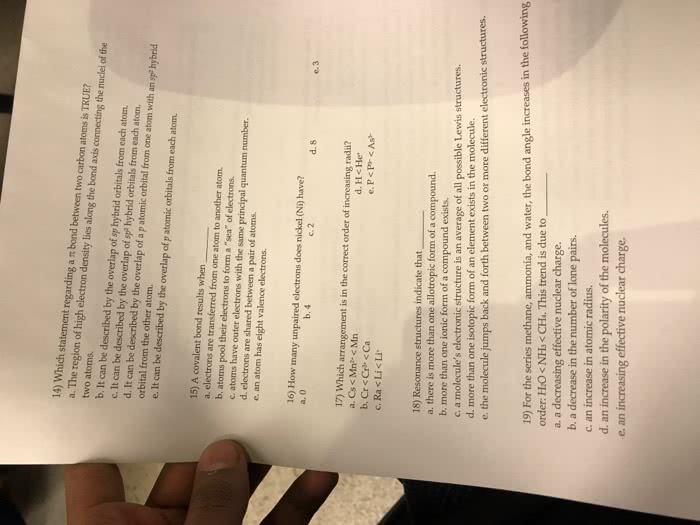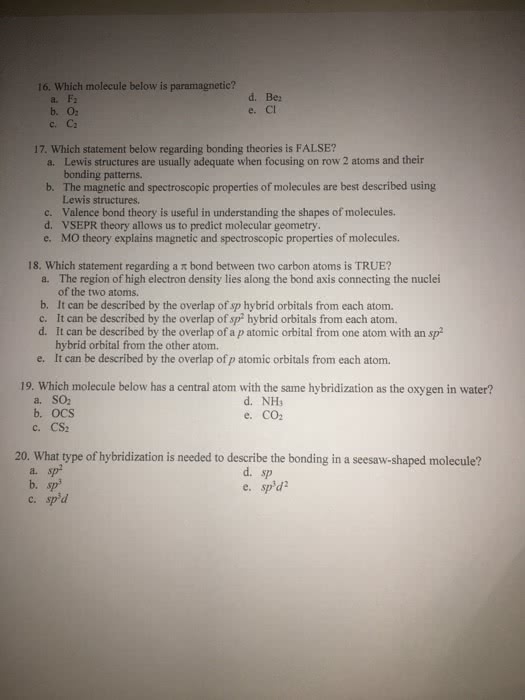CHEM 1124Q Chapter Notes - Chapter 5: Valence Bond Theory, Orbital Hybridisation, Valence Electron
Document Summary
We can use quantum mechanics to predict the specific regions around an atom where electrons are likely to be located: a spherical shape for an s orbital, a dumbbell shape for a p orbital, and so forth. Orbitals on two different atoms overlap when a portion of one orbital and a portion of a second orbital occupy the same region of space. The mutual attraction between this negatively charged electron pair and the two atoms" positively charged nuclei serves to physically link the two atoms through a force we define as a covalent bond. The strength of a covalent bond depends on the extent of overlap of the orbitals involved. Orbitals that overlap extensively form bonds that are stronger than those that have less overlap. When the atoms are far apart there is no overlap, and by convention we set the sum of the energies at zero. As the atoms move together, their orbitals begin to overlap.



